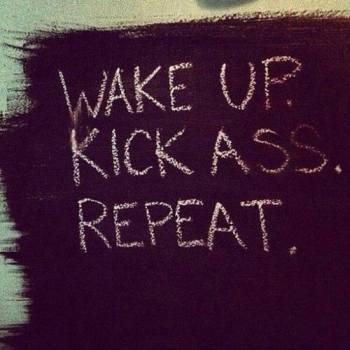
It is a well known fact that physical activity and exercise can help you stay healthy, energetic and independent as one gets older.
Meena Vivekanand of Fitness One shares a few simple ways to ensure you stay active and healthy:
Cardio exercises -- endurance for all ages:
- Helps lessen fatigue and shortness of breath
- Promotes independence by improving endurance for daily activities such as walking, house cleaning, and errands
- Cardio workouts get your heart pumping which is good for overall circulation and body regulation. Even a sport such as tennis and cycling may help you stay active.
Strength Training
Helps prevent loss of bone mass, builds muscle, and improves balance: both important in staying active and avoiding falls.
Improving your bone mass content becomes increasingly important as we get on in years. Simple exercises can be done with the help of a trainer at your local gym with free weights or elastic bands. Strength training is also important to tone muscles and aids balance. You will be able to do simple tasks such as opening a jar, lifting your own luggage with more ease and efficiency.
Flexibility
Helps the body stay supple and increases your range of movement for ordinary physical activities such as looking behind while driving, tying your shoes, shampooing your hair, and playing with your grandchildren.
More importantly, flexibility is vital to avoid all those aches and pains that seem inevitable. Give yourself simple tasks to try to touch your feet, for example. Use the help of your personal trainer to support while you perform these actions so that the body’s joints move freely through a full range of motion. This can be done through stationary stretches and stretches that involve movement to keep your muscles and joints supple so they are less prone to injury. Yoga is an excellent means of improving flexibility.
Balance
We don’t much think about how important balance is until we face a situation where we face a fall, sadly. Balance is something that we need to train ourselves about. Right posture, a straight back while eating, relaxing, sleeping etc are very important. If you feel you need more guidance on this, you could ask the physiotherapist at the gym who will emphasise the importance of posture; this reduces the fear and the risk of falling. Typically gyms offer good advice on rectifying posture as well as corrective exercise programmes.
Yoga and Zumba
These combine a series of poses with breathing. Moving through the poses encourages a focus on strength, flexibility and balance. Yoga can be adapted to any level. Tai-Chi is a martial arts-inspired system of movement that increases balance and strength. Classes for seniors are often available at your local gym or community centre. Needless to say, Zumba is a highly popular form of dancercise that everyone can enjoy. Group classes are highly popular for all age categories as studies have indicated group classes ensures that everyone stays motivated to participate.
Walking
This is a perfect way to begin your exercise regimen. It requires no special equipment, aside from a pair of comfortable walking shoes, and can be done anywhere.
Stay grounded
While doing floor exercises, there are two things to keep in mind -- to include a variety of exercises and to keep moving. Fight the temptation to rest for longer periods of time on the floor and switch things up to target most of your major muscle groups. Rotate between sitting and standing exercises to get the most out of your workout. Use a timer or a clock to keep you on track. The best part of floor exercises is that everyone can do them at a time convenient for them.
If we choose to stay inactive, all the things you’ve always enjoyed doing and taken for granted may start to become that little bit harder. We may struggle to pursue simple pleasures, such as playing with the grandchildren, walking to the shops, leisure activities and meeting up with friends.
We must emphasise the importance of staying active across all ages. Just remember that mixing different types of exercise helps both reduce monotony and improve your overall health for all ages.
Here are few basic exercises that everyone can follow in order to prolong their healthy habits:
- Try to do something every day, preferably in bouts of 10 minutes of activity or more. The more you do, the greater the health gains. One way of achieving your weekly physical activity target is to do 30 minutes on at least five days a week. On at least two days a week, activities should include those that strengthen muscles and bones, such as weight training, carrying heavy loads and heavy gardening.
- Daily chores such as shopping, cooking or housework don't count towards your 150 minutes because the effort isn’t hard enough to raise your heart rate although they do help break up sedentary time.
- Do some yoga or Pilates while you, or the kids, unwind in front of a movie. While watching TV, do push-ups or sit-ups during commercials. Even one per commercial during a two-hour movie can give you some good exercise. Ensure that you learn how to do a proper push-up with the help of a professional trainer.
- Aerobics and dance is a great way to stay fit at any age! The local gym is a good place to start your routines.
- Crunches are great for your abs if you do them correctly. Done incorrectly, they can put undue stress on your neck and back. To avoid injury, be sure to use the correct techniques. The biggest risk is if you jolt your neck to give you the force to crunch. While doing crunches, keep your hands behind your head and your elbows back while using your stomach muscles to lift your head and chin towards the ceiling. Ask a professional to guide you to ensure right posture.
- Calf raises can be done wherever there is a raised surface, such as a stairway. If you need balance, hold onto the railing. Facing the stairs, stand with only your toes on the stair and your feet extending out past it. Standing straight up, lower your body down below the level of the stair and then back up onto your toes.
Photograph: Arya Ziai/Creative Commons











 © 2025
© 2025